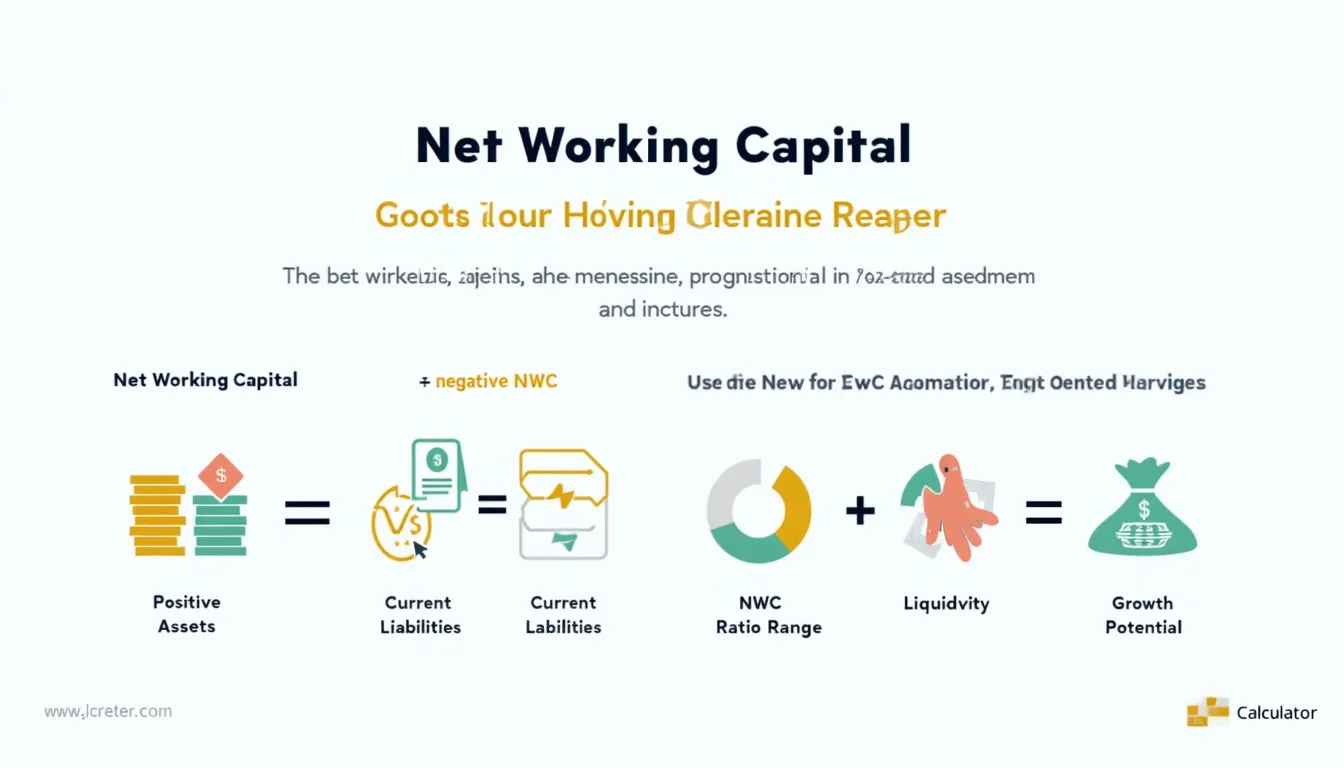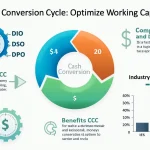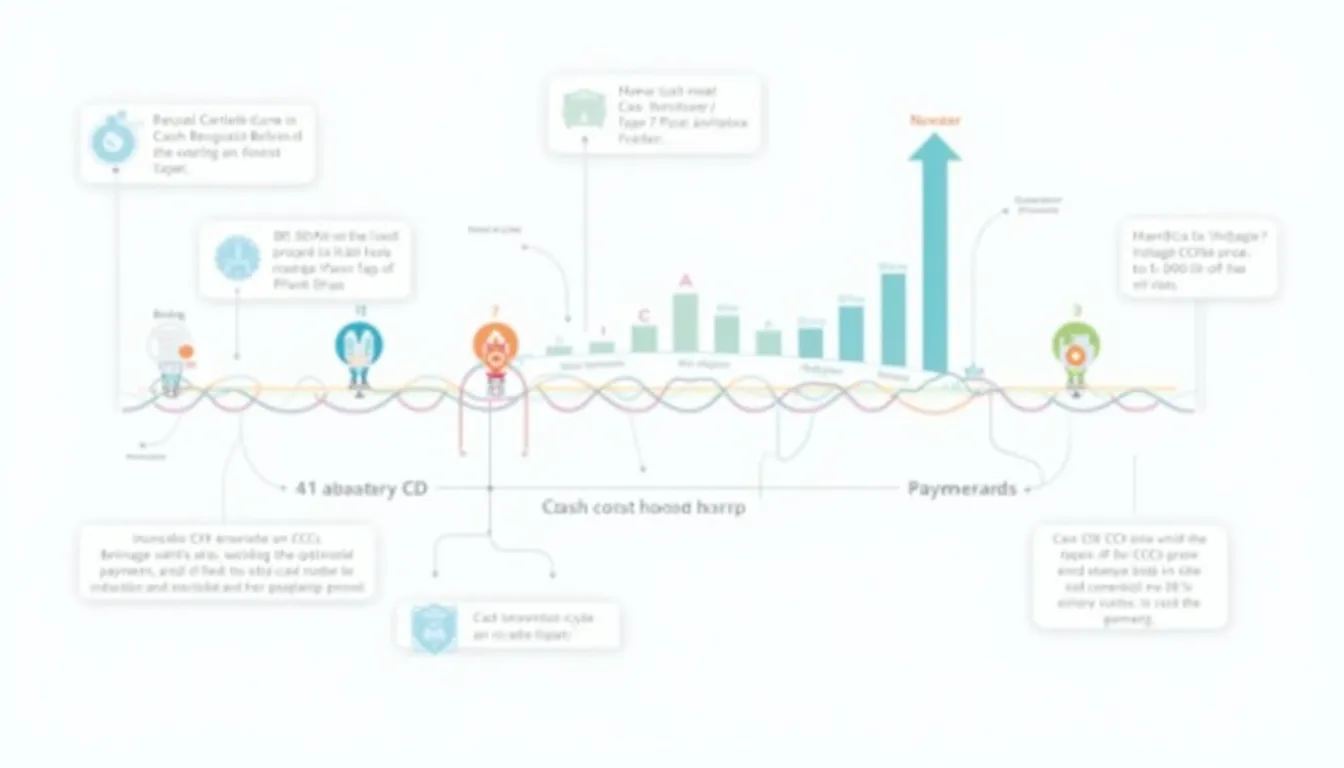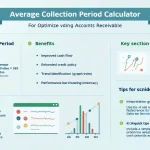Net Working Capital Calculator
Is this tool helpful?
How to use the tool
- Gather figures from your most recent balance sheet—cash, receivables, inventory, payables, and short-term loans.
- Add current assets and type the total in the first field.
• Example 1: $275,800
• Example 2: $418,450 - Add current liabilities and enter the sum in the second field.
• Example 1: $143,200
• Example 2: $307,900 - Click “Calculate.” The script computes net working capital.
- Interpret the number. Positive = enough liquidity; negative = funding gap.
Formula used
$$\text{Net Working Capital}= \text{Current Assets} – \text{Current Liabilities}$$
Example calculation
- Current assets: $275,800
- Current liabilities: $143,200
$$275{,}800 – 143{,}200 = 132{,}600$$
A positive $132,600 shows you can cover short-term debts and still have surplus cash.
Quick-Facts
- Typical healthy current ratio ranges from 1.2 – 2.0 (Corporate Finance Institute, https://corporatefinanceinstitute.com/resources/accounting/current-ratio/).
- U.S. SMEs keep 23 % of assets in cash or equivalents (Federal Reserve “Small Business Credit Survey,” 2023).
- Negative net working capital lasting two quarters often triggers bank covenant reviews (JP Morgan Commercial Banking Guide, 2022).
- Inventory usually represents 30-40 % of current assets in manufacturing firms (McKinsey Working Capital Report, 2021).
FAQ
What is net working capital?
Net working capital is the excess of current assets over current liabilities, indicating near-term liquidity (Investopedia, https://www.investopedia.com/terms/n/networkingcapital.asp).
Why does a positive balance matter?
Positive net working capital shows you can pay suppliers and lenders on time, avoiding penalties and supply disruptions (CFI, https://corporatefinanceinstitute.com/resources/accounting/net-working-capital/).
Can net working capital be too high?
Yes; excessive cash or inventory ties up funds that could earn higher returns elsewhere, lowering overall ROA (Harvard Business Review, https://hbr.org/2020/09/optimize-working-capital).
How often should you recalculate?
Recompute at least quarterly to match financial reporting; fast-growing firms update monthly for tighter cash control (Deloitte Cash Management Survey, 2022).
What causes negative net working capital?
Common drivers include rapid sales growth funded by payables, over-leveraged short-term debt, or slow receivable collections (PwC Working Capital Study, 2023).
How do you improve the figure quickly?
Accelerate receivable collection, negotiate longer supplier terms, and trim non-essential inventory—actions that free cash within weeks (McKinsey, 2021).
Is NWC the same as the current ratio?
No; NWC is a dollar amount, while the current ratio divides assets by liabilities to give a relative measure (SEC Investor.gov glossary).
What threshold alerts lenders?
Banks usually flag NWC turning negative for two consecutive periods as a covenant breach risk (JP Morgan Commercial Banking Guide, 2022).
Important Disclaimer
The calculations, results, and content provided by our tools are not guaranteed to be accurate, complete, or reliable. Users are responsible for verifying and interpreting the results. Our content and tools may contain errors, biases, or inconsistencies. Do not enter personal data, sensitive information, or personally identifiable information in our web forms or tools. Such data entry violates our terms of service and may result in unauthorized disclosure to third parties. We reserve the right to save inputs and outputs from our tools for the purposes of error debugging, bias identification, and performance improvement. External companies providing AI models used in our tools may also save and process data in accordance with their own policies. By using our tools, you consent to this data collection and processing. We reserve the right to limit the usage of our tools based on current usability factors.







